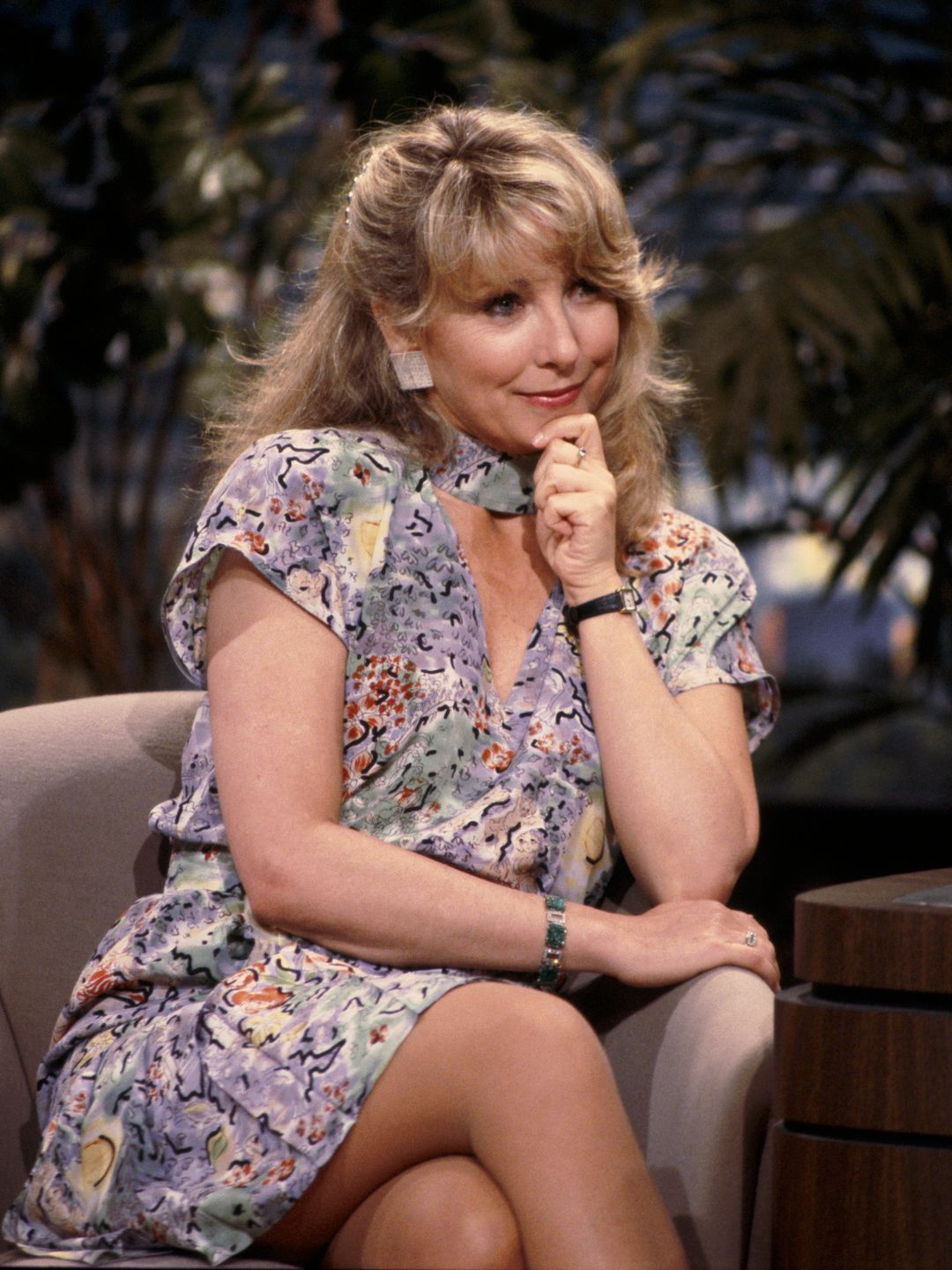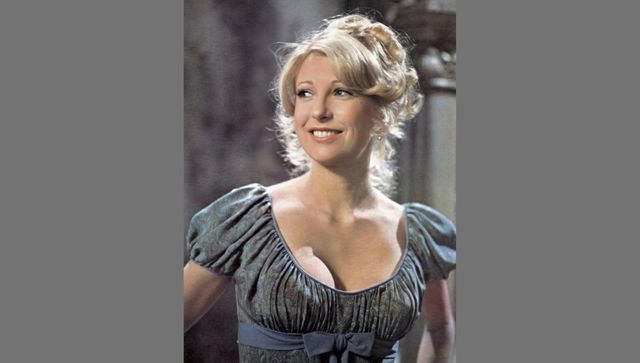Before her name was up in lights, she was just another hopeful dancing her way into our hearts
In 1950, a photograph captured a wide-eyed 19-year-old on the cusp of stardom. With her radiant smile, endless energy, and a talent for dance that seemed to flow straight from her soul, she was already dazzling those lucky enough to catch her in rehearsal rooms and on small stages. That young woman was Mitzi Gaynor — a name that would soon shine brightly in both Hollywood and the world of live performance. Today, as she celebrates her 92nd birthday, Gaynor’s legacy as one of the most dynamic triple-threat entertainers of the 20th century continues to inspire admiration.

Born Francesca Marlene de Czanyi von Gerber in Chicago in 1931, Mitzi Gaynor came from Hungarian and Slovak roots, with a heritage that was as vibrant as her personality. Her family relocated to Hollywood when she was a child, placing her in the heart of the entertainment world before she even knew what her future might hold. Trained as a dancer from a young age, Gaynor quickly showed a natural flair for movement and rhythm. By her teenage years, she had joined the Los Angeles Civic Light Opera company, where she began earning attention for her performances in operettas and musicals.
By the time she was 19, the fresh-faced performer was signed to Twentieth Century Fox, beginning her journey through Hollywood’s golden age of musicals. In an era dominated by the likes of Gene Kelly, Fred Astaire, and Judy Garland, Gaynor carved her own niche with a style that was effervescent, bold, and uniquely hers. She didn’t just dance — she exploded across the screen with charisma, her performances brimming with joy and a contagious energy that made audiences lean in for more.

Her early films, such as My Blue Heaven (1950) and Golden Girl (1951), established her as a rising star. She could sing sweetly, hold her own in comedic scenes, and dance with precision and flair. Yet it was her ability to radiate sincerity — to make audiences believe she was having the time of her life — that made her stand out in a crowded field of studio contract players. Mitzi Gaynor wasn’t just another ingénue; she was a force in motion.
The pinnacle of her film career came in 1958 when she starred as Ensign Nellie Forbush in Rodgers and Hammerstein’s South Pacific. The film adaptation of the beloved Broadway musical became a massive hit, cementing Gaynor’s place in Hollywood history. Her rendition of “I’m Gonna Wash That Man Right Outa My Hair” became iconic, showcasing not only her voice but also her playful, fearless approach to performance. In Nellie, audiences saw Gaynor at her finest — blending comedy, romance, and heart with a captivating screen presence.

Yet while South Pacific remains the crown jewel of her filmography, Gaynor’s career was far from limited to the silver screen. By the 1960s, she had transitioned into a powerhouse of live entertainment, reinventing herself at a time when many of her contemporaries struggled to adapt to the changing entertainment landscape. She began headlining in Las Vegas and touring internationally, creating stage shows that were dazzling spectacles of song, dance, and elaborate costumes.
Her television specials in the late 1960s and 1970s brought her to a new generation of fans. The Emmy-nominated Mitzi... Roarin’ in the 20’s (1976) and other specials showcased her versatility and flair for reinventing herself, blending comedy sketches, musical numbers, and high-energy dance routines. In many ways, Gaynor pioneered the variety-show format that became a staple of American television.

Behind the glamour, though, was a hardworking woman who knew the demands of show business. Gaynor has often reflected that her success came not only from talent but from discipline — endless rehearsals, long hours of training, and an iron will to keep pushing herself creatively. She was never content to rest on past successes; each performance was an opportunity to outdo herself.
Her personal life was also a source of stability in an often-turbulent industry. In 1954, she married Jack Bean, a talent agent and public relations executive, who later managed her career. Their marriage lasted until his death in 2006, a rare Hollywood love story that spanned more than half a century. Bean was instrumental in helping Gaynor transition from film to live performance, recognizing her unique ability to captivate audiences on stage. Together, they built not only a career but also a life rooted in mutual respect and shared ambition.

As the years passed, Mitzi Gaynor’s star never truly dimmed. She continued to perform well into the 21st century, delighting audiences with her stage shows and appearances at special events. In 2008, she was honored with the Tremaine Entertainment Legend Award, and in 2009, she received the National Academy of Television Arts & Sciences’ Emmy Award for her contributions to the medium. Even in her later years, she carried the same infectious energy that defined her youth.
What makes Mitzi Gaynor’s story particularly compelling is her ability to transcend eras. While many stars of the Hollywood musical were confined to their time, Gaynor reinvented herself repeatedly, ensuring her relevance across decades. She embodies the resilience and adaptability that marks true stardom.
Today, at 92, Gaynor is celebrated not only for her body of work but also for the way she represents a bygone era of entertainment — one defined by live performance, unfiltered charisma, and the belief that talent could conquer all. She is one of the last surviving stars from Hollywood’s golden age of musicals, a living connection to a time when song-and-dance numbers lit up the screen and lifted audiences out of their everyday lives.

That photograph from 1950, showing a bright-eyed young woman at 19, now feels like a prophecy fulfilled. The hopeful dancer did more than just find her way into audiences’ hearts — she became a part of entertainment history. Mitzi Gaynor’s story is one of passion, transformation, and longevity, reminding us all that while fame may flicker, true artistry endures.
Happy 92nd birthday, Mitzi Gaynor — the dancer who dreamed big, the actress who charmed millions, and the star who still shines.
Behind Teri Garr’s radiant screen presence was a story of grit, grace, and quiet defiance

She danced behind Elvis, cracked up Mel Brooks, and nearly stole Tootsie from Dustin Hoffman — all with a raised eyebrow and impeccable timing. Teri Garr was the kind of performer who made it all look effortless. With her sunny smile and razor-sharp comedic instincts, she lit up every screen she touched. But behind the sparkle and the laughs was a story of grit, grace, and quiet defiance — the kind of journey that makes her one of Hollywood’s most fascinating, and perhaps underrated, icons.

Born in Lakewood, Ohio, in 1944, Teri Garr seemed destined for the stage. Her father was a vaudeville comedian and actor, and her mother a dancer and wardrobe mistress, so entertainment ran through her veins. But nothing was handed to her. After her father passed away when she was young, her mother raised three children on her own, and Garr learned early what resilience meant. Dancing became her escape, her language, and her ticket into show business.
Her career began in the background — quite literally. If you squint at some of Elvis Presley’s early films from the 1960s, you’ll spot her twirling in the chorus line. She was a go-to dancer for choreographer David Winters, appearing in more than a dozen Elvis movies, paying her dues while soaking in every ounce of experience Hollywood could give. But Garr wasn’t content to stay in the background. She wanted to speak, to crack jokes, to take center stage.

Her big break came with Mel Brooks’ Young Frankenstein in 1974. As Inga, the wide-eyed, thick-accented assistant to Gene Wilder’s Dr. Frankenstein, Garr turned what could have been a one-note part into comedic gold. With her mix of innocence and sly wit, she stole scenes with nothing more than a glance, a perfectly timed pause, or the delivery of a single, hilarious line. Brooks called her a “comic natural,” and audiences agreed. She was suddenly everywhere.
The late 1970s and early 1980s cemented Garr as one of the most versatile actresses in Hollywood. She could do screwball comedy, like in Oh, God! opposite John Denver, and then turn around and deliver subtle drama. But it was Sydney Pollack’s 1982 classic Tootsie that became her signature. Playing Sandy, the insecure but endearing actress and girlfriend to Dustin Hoffman’s struggling actor, Garr brought warmth and pathos to a film brimming with satire. Her performance earned her an Academy Award nomination for Best Supporting Actress — and in many ways, she became the emotional heart of the movie.

What made Garr so remarkable was her range. She could be the ditzy blonde with perfect comedic timing, but she also infused those roles with intelligence and humanity. She didn’t condescend to her characters. Instead, she gave them depth. Even when Hollywood tried to pigeonhole her, Garr resisted with grace, choosing roles that allowed her to stretch, whether in dramas like The Conversation or family favorites like Close Encounters of the Third Kind and Mr. Mom.
Yet behind the glamour of the spotlight, Garr’s life carried challenges that required enormous strength. For years, she lived with symptoms of multiple sclerosis before being officially diagnosed in 1999. Instead of retreating, she became an advocate, using her platform to raise awareness about the disease. With her signature wit intact, she spoke candidly about her health, never allowing it to define her. “I’ve always been a fighter,” she once said. “That’s the only way you get through this business, or through life.”

Her candor extended beyond her illness. Garr was refreshingly honest about Hollywood itself — about the sexism, the typecasting, the uphill battles faced by women in comedy. She carved her path at a time when women were often sidelined as decoration or sidekicks, proving they could be just as funny, layered, and memorable as their male counterparts. In doing so, she paved the way for a generation of actresses who would follow.
By the 2000s, Garr had slowed her career but never stopped working entirely, appearing in TV favorites like Friends (as Phoebe’s eccentric mother) and continuing to bring her unique brand of humor to every role. To her fans, she was more than just an actress — she was a reminder of an era when talent, charm, and resilience mattered more than spectacle.

Looking back, what makes Teri Garr’s story so compelling isn’t just the highlight reel of roles, though there are plenty: from her first comedic explosion in Young Frankenstein to her Oscar-nominated brilliance in Tootsie, from her dance steps behind Elvis to her touching performances in dramas. It’s the way she carried herself through it all — with grit, grace, and a refusal to let challenges dim her light.
She once joked that she built her career on “the power of the raised eyebrow.” But it was more than that. It was her timing, her honesty, her courage to be silly and serious, glamorous and grounded, all at once. In many ways, she was Hollywood’s secret weapon: you might come for the big names, but you’d leave remembering Teri Garr.

Think you know her? Maybe you know her laugh, her smile, her unforgettable performances. But the full story of Teri Garr is even richer: a dancer who became a star, a comedienne who could break your heart, a woman who never stopped fighting. And in that, she remains one of Hollywood’s most enduring treasures.





